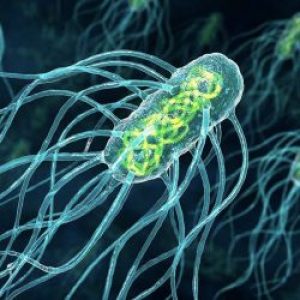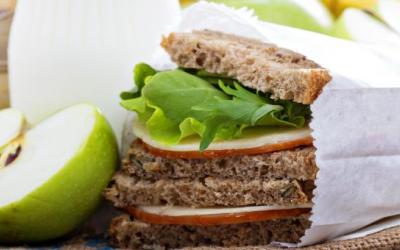Feed flour as an additional source of protein nutrition for farm animals

 Rapid 4 in 1 tests for determining the residual amount of neomycin, kanamycin, gentamicin, spectinomycin in milk, whey
Rapid 4 in 1 tests for determining the residual amount of neomycin, kanamycin, gentamicin, spectinomycin in milk, whey PIONEER MEIZHENG BIO-TECH (5 in1) JC1165 / Rapid tests for the determination of the residual amount of halofuginone, flavomycin, novobiocin, flunixin, dexamethasone / prednisolone in milk, whey
PIONEER MEIZHENG BIO-TECH (5 in1) JC1165 / Rapid tests for the determination of the residual amount of halofuginone, flavomycin, novobiocin, flunixin, dexamethasone / prednisolone in milk, whey
Feed FLOUR of animal origin is used as a protein nutrition supplement. it has great nutritional value and is used in its natural form and for the production of compound feed. The main type of feed meal is MEAT and bone meal. It is produced mainly in meat processing plants and poultry factories. Meat and bone meal is a protein feed for poultry and pigs. Its addition to feed increases its productivity, enriches it with proteins, useful minerals and vitamins, and reduces feed costs. It is very important to monitor the quality of meat and bone meal. It is produced in loose and granulated form, in accordance with the requirements of GOST 17536-82 “Feed flour of animal origin” in compliance with approved veterinary and sanitary rules.
For the production of feed meal of animal origin, veterinary confiscated goods, non-food and low-value raw materials obtained from the slaughter and processing of all types of livestock, poultry, rabbits, as well as the corpses of livestock and poultry, approved by veterinary and sanitary supervision for the production of feed meal of animal origin, are used. Depending on the composition of the raw materials, feed flour is divided into: meat and bone meal; meat; blood; bone; from hydrolyzed feathers. Meat and bone meal is the most common raw material of animal origin in the production of animal feed. At the same time, it becomes possible for essential amino acids to appear in the feed. It is a good source of macroelements: calcium contains up to 12%, phosphorus - up to 6%, sodium up to - 2%, phosphorus - 4%.
Meat and bone meal is a good source of vitamins B1 especially: riboflavin, choline, nicotinic acid, cobalamin. Constantly adding meat and bone meal to the feed when feeding animals will allow you to: increase productivity, enrich the feed with proteins, amino acids, vitamins, minerals and increase their nutritional value, normalize metabolism, and reduce feed costs.
Depending on the content of protein, fat and mineral salts, meat and bone meal is divided into three grades. Risk factors in the production of meat and meat and bone meal may include problems of bacterial origin: putrefactive microflora, bacterial toxins, salmonella , clostridia, as well as oxidation or rancidity, when peroxides, ketones, and aldehydes are formed. In order to obtain high-quality meat and bone meal, it is important to produce it from fresher slaughterhouse waste, protect it from bacterial contamination and stabilize it with antioxidants.
To sell feed flour, it is necessary to declare it in accordance with the requirements of the Decree of the Government of the Russian Federation of December 23, 2021 “On approval of a unified list of products subject to mandatory certification and a unified list of products subject to declaration of conformity” No. 2425.
The information was prepared by an expert in the field of product quality confirmation of the Federal State Budgetary Institution “Rostov Reference Center of Rosselkhoznadzor”.
Read together with it:
- Salmonella detected in Petelinka products: another safety issueThis isn't the first time dangerous microorganisms have been found in this company's products. Salmonellosis is a serious infectious disease characterized by nausea, vomiting, fever, and general malaise. Maria Zolotareva, a lecturer in the Department of Biotechnology at the Russian Technical University MIREA, warns Russians against washing raw MEAT, as water splashes can spread the bacteria.bacter...
- A Rostov broiler farmer was fined 750,000 rubles for selling meat contaminated with salmonella.The lawsuit against the poultry farm was filed by ROSSELKHOZNADZOR based on the results of an inspection that revealed serious violations of the production process. These included rust on metal structures, which compromised product quality, and unsanitary conditions that facilitated the growth of pathogenic microflora. A batch of Blagoyar pork legs with the backbone proved particularly dangerous, ...
- The discovery of salmonella in Troekurovo products resulted in a fine for the manufacturer.According to the TELEGRAM channel "SHOT PROVERKA," information about the contamination came to light after specialists from the Omsk Region Office of Rospotrebnadzor conducted tests at a Magnit store in the Novosibirsk Region. The six-month investigation culminated in a COURT case, with the manufacturer, JSC PRODO Sibirskaya Poultry Farm , being fined 35......
- Argentina: 0% agricultural taxes: How the temporary waiver of export duties on grain and meat will workThe abolition of income taxes on more than 70 types of agricultural products, officially announced today by the national government, directly impacts Argentine grain, MEAT, and offal exports . The decree, published Monday in the Official Gazette, sets the EXPORT tax rate at 0% until October 31, 2025, or until the exhaustion of the $7 billion quota for declarations of sales abroad (DJVE), whichever...
- Chicken meat quality in the Nizhny Novgorod region is a concern: salmonella and listeria have been detected.The region's main MEAT producers are the Pavlovskaya and Lindovskaya poultry farms, but the latter is facing financial difficulties. Grigoryev noted that chicken prices rose between 2022 and 2024, which had a positive impact on production modernization. Irina Petrova, DIRECTOR of the Nizhny Novgorod branch of the All-Russian Research Institute of Animal HEALTH, reported that in 2......
- БУТБ будет сотрудничать с торгово-промышленной палатой Камчатского краяДмитрий Коростелев и Александр Осмоловский. Фото БУТБ 18 сентября, Минск. Соглашение о сотрудничестве заключено между Белорусской универсальной товарной биржей и Торгово-промышленной палатой Камчатского края в целях создания благоприятных условий для увеличения взаимного товарооборота и более активного использования биржевых инструментов в экспортно-импортной деятельности. Церемония подписания док...
- С 13 сентября в Республике Татарстан стартуют традиционные сельскохозяйственные ярмаркиЯрмарки пройдут на 14 площадках г. Казани, 2 площадках г. Набережные Челны, 2 площадках г. Зеленодольск, 2 площадках г. Нижнекамск и 1 площадке в пгт. Камские Поляны Нижнекамского района. Впервые ярмарка пройдет на территории «Салават Купере — 2» по адресу г. Казань, ул. А. Авзаловой, д. 15. Ярмарки направлены на поддержку сбыта фермерской продукции и организацию ее продажи напрямую потребителю, ч...
- Belarusian Pasta in Italian Style. We tell you how spaghetti and noodles are made in BorisovTopic newsHow does Borisov KHP manage to produce high-quality natural food products at affordable prices? The largest grain processing enterprise in Belarus, the Borisov Bread Products Plant, produces a wide range of FLOUR and cereal products, pasta, as well as semi-finished products for baking, healthy food products, and pizza mixes. A correspondent for the 7 Days newspaper found out what makes t...

























































